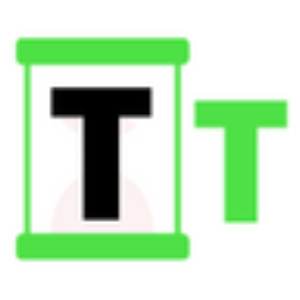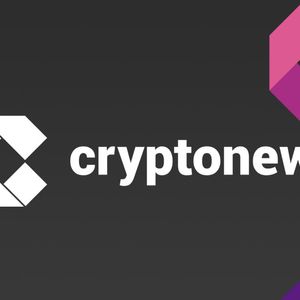Tokenized Bank Deposits: A Promising Future Favored by Global Regulators
11 min read
BitcoinWorld Tokenized Bank Deposits: A Promising Future Favored by Global Regulators Are you keeping an eye on the evolving world of digital finance? A recent report from banking giant JPMorgan has shed fascinating light on how regulators outside the U.S. are viewing the future of money. It seems there’s a clear preference emerging: tokenized bank deposits are gaining favor over traditional stablecoins for building the next generation of digital payment infrastructure . This isn’t just a technical nuance; it’s a significant indicator of how global finance might evolve, impacting everything from cross-border transactions to everyday digital commerce. Let’s delve into why this shift is happening and what it means for you. Understanding the Shift: Tokenized Bank Deposits vs. Stablecoins To truly grasp the significance of JPMorgan’s findings, we first need to understand the key players in this digital payment arena. Both tokenized bank deposits and stablecoins aim to bridge the gap between traditional fiat currency and the speed and efficiency of blockchain technology, but they do so in fundamentally different ways. What are Tokenized Bank Deposits ? Imagine your money in a bank account, but instead of just being an entry in a ledger, it’s represented as a digital token on a distributed ledger technology (DLT) platform, like a blockchain. That’s essentially a tokenized bank deposit. Here’s what makes them distinct: Bank Liability: Crucially, these are still liabilities of a regulated commercial bank. This means they are backed by the full faith and credit of the bank and typically fall under existing regulatory frameworks, including deposit insurance. This inherent link to established financial institutions provides a layer of security and trust. Programmability: Like other digital tokens, they can be programmed to execute specific actions automatically, opening doors for innovative financial applications like instant settlements, atomic swaps, and complex smart contracts. This allows for far greater efficiency and automation in financial processes. Integration: They are designed to integrate seamlessly with existing financial systems while leveraging the benefits of DLT. This approach minimizes disruption to the current financial architecture, making adoption smoother for traditional players. And What About Stablecoins ? Stablecoins, on the other hand, are cryptocurrencies designed to minimize price volatility by pegging their value to a stable asset, typically fiat currencies like the U.S. dollar. The most common types are: Fiat-backed Stablecoins: Such as Tether (USDT) or USD Coin (USDC), which aim to maintain a 1:1 peg with a fiat currency by holding equivalent reserves. The transparency and liquidity of these reserves have been a frequent point of discussion. Crypto-backed Stablecoins: Over-collateralized with other cryptocurrencies, these often involve more complex mechanisms to maintain their peg. Algorithmic Stablecoins: Rely on algorithms and smart contracts to maintain their peg, though many have proven highly volatile and challenging to sustain in practice. While stablecoins have gained significant traction in the crypto world for trading and DeFi, their regulatory status and backing mechanisms have often been subjects of intense scrutiny, leading to varying levels of trust and adoption outside the crypto native space. Here’s a quick comparison to highlight the core differences that inform the regulatory preference : Feature Tokenized Bank Deposits Stablecoins (Fiat-backed) Issuer Regulated Commercial Banks Crypto Companies, Decentralized Protocols Legal Status Bank Liability, subject to existing banking laws Varies; often viewed as e-money, payment tokens, or unregistered securities depending on jurisdiction Regulatory Oversight Comprehensive (banking regulators, deposit insurance) Patchy, evolving, often subject to new regulations or regulatory gaps Risk Profile Tied to bank solvency, but within established regulatory safeguards Reserve transparency, operational risk, redemption risk, potential for systemic risk if large enough Primary Use Case (Current) Wholesale interbank settlements, future retail payments Crypto trading, DeFi, cross-border remittances Why the Regulatory Preference ? Unpacking JPMorgan’s Insights The core of JPMorgan’s report suggests a clear trend among non-U.S. regulators. But why this leaning towards tokenized bank deposits? The answer lies primarily in control, risk management, and the desire to integrate innovation within existing, robust financial frameworks, ensuring stability and trust in the nascent digital asset space. Existing Regulatory Frameworks: Tokenized bank deposits fit neatly into established banking regulations. Banks are already subject to stringent capital requirements, liquidity rules, anti-money laundering (AML), and know-your-customer (KYC) laws. This familiarity offers regulators a sense of security and continuity. Stablecoins, particularly those issued by non-bank entities, often fall into regulatory gaps, making oversight challenging and inconsistent. Financial Stability: Regulators are inherently focused on maintaining financial stability. Tokenized deposits, being bank liabilities, are subject to the same protections and stability mechanisms as traditional bank deposits, including deposit insurance. This significantly reduces the risk of ‘runs’ or systemic shocks that could arise from poorly managed or unregulated stablecoin reserves, which have historically posed concerns. Monetary Policy Control: Central banks and financial authorities want to retain control over monetary policy. Tokenized bank deposits, by operating within the traditional banking system, allow central banks to continue influencing money supply and interest rates effectively. Widespread adoption of unregulated stablecoins could potentially undermine this crucial control, impacting economic management. Consumer Protection: The established legal and regulatory frameworks for banks provide clear mechanisms for consumer protection, dispute resolution, and legal recourse. This is often less clear or non-existent for many stablecoin offerings, leaving users potentially vulnerable. Essentially, regulators see tokenized bank deposits as a way to embrace the efficiency and programmability of blockchain technology without sacrificing the safety and stability that traditional banking provides. This approach allows for controlled innovation, ensuring that new digital payment systems are built on a foundation of trust and accountability. Shaping the Future of Digital Payment Infrastructure This regulatory leaning has profound implications for how the global digital payment infrastructure will be built and utilized. The shift isn’t just theoretical; it’s driving concrete developments in wholesale finance and potentially beyond, setting the stage for a more efficient and interconnected global financial system. Wholesale Payments and Interbank Settlements: One of the most immediate applications for tokenized bank deposits is in streamlining interbank settlements and wholesale payments. Imagine instantaneous, atomic settlements between financial institutions, reducing counterparty risk and freeing up capital. JPMorgan itself has been a pioneer in this space with its JPM Coin, which is a private blockchain-based system for wholesale payments, demonstrating real-world application. Cross-Border Transactions: Current cross-border payments are often slow, expensive, and opaque due to multiple intermediaries and legacy systems. Tokenized deposits, operating on shared DLT networks, could revolutionize this by enabling real-time, programmable, and significantly cheaper international transfers. This would benefit businesses engaged in global trade and even individuals sending remittances, fostering greater economic inclusion. Programmable Finance: The inherent programmability of tokens allows for the creation of sophisticated financial instruments and automated processes. This could include automated collateral management, instant bond settlements, or even new forms of supply chain finance where payments are released automatically upon verified delivery, reducing manual intervention and errors. CBDC Complement: While not Central Bank Digital Currencies (CBDCs), tokenized bank deposits could work in tandem with them. CBDCs might serve as the base layer of central bank money, with tokenized commercial bank money serving as the primary medium for retail and wholesale transactions, creating a multi-tiered digital currency ecosystem that leverages both central bank stability and commercial bank innovation. The preference for tokenized bank deposits signals a future where digital payments are deeply integrated with the existing financial system, rather than operating entirely outside of it. This promises a more stable, efficient, and interconnected global financial landscape, capable of handling the increasing demands of the digital economy. What Does This Mean for the Global Financial Landscape? A Look Beyond the U.S. The JPMorgan report specifically highlights the views of “non-U.S. regulators.” This distinction is crucial because regulatory approaches to digital assets vary significantly across the globe. While the U.S. has been cautious, often focusing on consumer protection and anti-money laundering for stablecoins, other jurisdictions are actively exploring different models, often with a more proactive stance towards integrating DLT into their financial systems. Europe’s Stance: The European Union’s Markets in Crypto-Assets (MiCA) regulation is a landmark framework that will regulate stablecoins (e-money tokens and asset-referenced tokens). While MiCA brings clarity, it also imposes stringent requirements that might favor traditional financial institutions for issuing such tokens, aligning somewhat with the preference for regulated entities. Asia’s Innovations: Countries like Singapore and Hong Kong have been at the forefront of exploring tokenized deposits and wholesale CBDCs, often collaborating with commercial banks on pilot programs. Their approach often seeks to leverage DLT for interbank settlements and cross-border payments, aligning with the tokenized deposit model as a means to enhance financial efficiency and competitiveness. UK’s Exploration: The UK is also actively exploring the concept of a digital pound and has consulted on the regulatory framework for stablecoins, again showing a preference for solutions that integrate with existing financial stability mechanisms and leverage the strength of its financial sector. This global trend suggests a move towards a regulated, institutionalized form of digital money, where the stability and oversight of banks are leveraged. While this might disappoint some in the decentralized crypto community who advocate for purely permissionless stablecoins, it provides a clearer path for mainstream adoption and integration into the global financial system, potentially unlocking significant value. Navigating the New Era: Insights from JPMorgan and Beyond The insights from JPMorgan are not just an observation; they reflect a strategic direction that one of the world’s largest financial institutions believes is the most viable path forward for digital money. Their active involvement in developing private blockchain solutions like JPM Coin underscores their belief in the utility of tokenized bank deposits for wholesale transactions and their commitment to digital innovation within a regulated environment. For businesses, financial institutions, and even everyday users, understanding this shift is paramount, as it will influence how financial services are delivered and consumed in the coming years: For Financial Institutions: The message is clear: embrace tokenization within your existing frameworks. Invest in DLT infrastructure, explore partnerships, and develop new products that leverage programmable money while adhering to regulatory requirements. This is an opportunity to modernize and enhance service offerings. For Businesses: Prepare for a future where payments are faster, cheaper, and more transparent. Explore how programmable payments could optimize supply chains, automate reconciliation, and unlock new business models. This could lead to significant operational efficiencies and competitive advantages. For Policy Makers: The report serves as a strong signal that fostering innovation requires clear, adaptable regulatory frameworks that can accommodate new technologies without compromising financial stability or consumer protection. Striking this balance is key to responsible financial evolution. For Crypto Enthusiasts: While the focus might shift from purely decentralized stablecoins to bank-issued tokens, this doesn’t diminish the underlying blockchain technology. Instead, it highlights how DLT can be integrated into the mainstream, potentially leading to broader adoption and new opportunities for interoperability between traditional finance and decentralized systems. The journey towards fully digital payment infrastructure is complex, involving technological advancements, legal clarity, and international cooperation. However, the preference for tokenized bank deposits as highlighted by JPMorgan provides a compelling roadmap for a future where digital money is both innovative and incredibly secure, benefiting all participants in the global economy. Conclusion: A Future Built on Trust and Innovation JPMorgan’s latest report offers a compelling glimpse into the future of digital finance, indicating a strong global regulatory preference for tokenized bank deposits over traditional stablecoins . This isn’t a rejection of digital innovation but rather an embrace of it within the secure and regulated confines of the established financial system. As countries worldwide seek to modernize their digital payment infrastructure , the stability, oversight, and familiarity offered by bank-issued tokens appear to be the preferred path. This strategic pivot, heavily influenced by insights from institutions like JPMorgan , promises a future where digital transactions are not only faster and more efficient but also underpinned by robust regulatory frameworks, ensuring both innovation and enduring financial stability. It’s an exciting time to witness the evolution of money, moving towards a system that is both cutting-edge and reassuringly secure. Frequently Asked Questions (FAQs) As the world of digital finance continues to evolve, it’s natural to have questions about these complex concepts. Here are some common queries regarding tokenized bank deposits, stablecoins, and their regulatory landscape: 1. What is the fundamental difference between tokenized bank deposits and stablecoins? The core difference lies in their issuer and regulatory status. Tokenized bank deposits are liabilities of regulated commercial banks, meaning they are essentially digital representations of money held in a traditional bank account, subject to existing banking laws and deposit insurance. Stablecoins, while also pegged to a stable asset (like fiat currency), are typically issued by crypto companies or decentralized protocols, and their regulatory oversight is often less comprehensive or still evolving, depending on the jurisdiction and specific stablecoin. 2. Why are non-U.S. regulators showing a regulatory preference for tokenized bank deposits? Regulators prioritize financial stability, consumer protection, and monetary policy control. Tokenized bank deposits fit seamlessly into existing regulatory frameworks, offering familiar oversight, deposit insurance, and adherence to anti-money laundering (AML) and know-your-customer (KYC) rules. This provides a higher degree of confidence and control compared to the often less regulated and more diverse stablecoin ecosystem, ensuring innovation occurs within a stable and secure environment. 3. How will this preference impact the future of digital payment infrastructure ? This preference suggests a future where digital payment infrastructure, particularly for wholesale and cross-border transactions, will be built upon regulated, bank-issued digital money. This could lead to more efficient, faster, and transparent interbank settlements, improved cross-border payments, and the development of new programmable finance applications. It aims to integrate the benefits of blockchain technology with the stability of the traditional financial system. 4. Does this mean stablecoins will become obsolete? Not necessarily. While regulators may prefer tokenized bank deposits for core financial infrastructure due to their inherent stability and regulatory alignment, stablecoins still have a significant role in the broader crypto ecosystem, decentralized finance (DeFi), and niche payment use cases. Their future will likely depend on how they adapt to evolving regulations and whether they can demonstrate sufficient transparency and stability to meet regulatory expectations. They might co-exist, serving different segments of the digital economy. 5. What role does JPMorgan play in this discussion? JPMorgan is a major global financial institution that has been actively exploring and implementing blockchain technology for its own operations, notably with JPM Coin for wholesale payments. Their report reflects deep insights from a traditional finance perspective, indicating where they see the industry moving and what regulatory bodies are signaling. Their findings are significant because they come from a player deeply embedded in both traditional finance and digital asset innovation, offering a credible perspective on future trends. Share Your Thoughts! What are your predictions for the future of digital payments? Do you agree with the regulatory preference for tokenized bank deposits? Share this article on social media and join the conversation! Your insights contribute to shaping the future of finance. To learn more about the latest crypto market trends, explore our article on key developments shaping digital payment infrastructure institutional adoption. This post Tokenized Bank Deposits: A Promising Future Favored by Global Regulators first appeared on BitcoinWorld and is written by Editorial Team

Source: Bitcoin World



